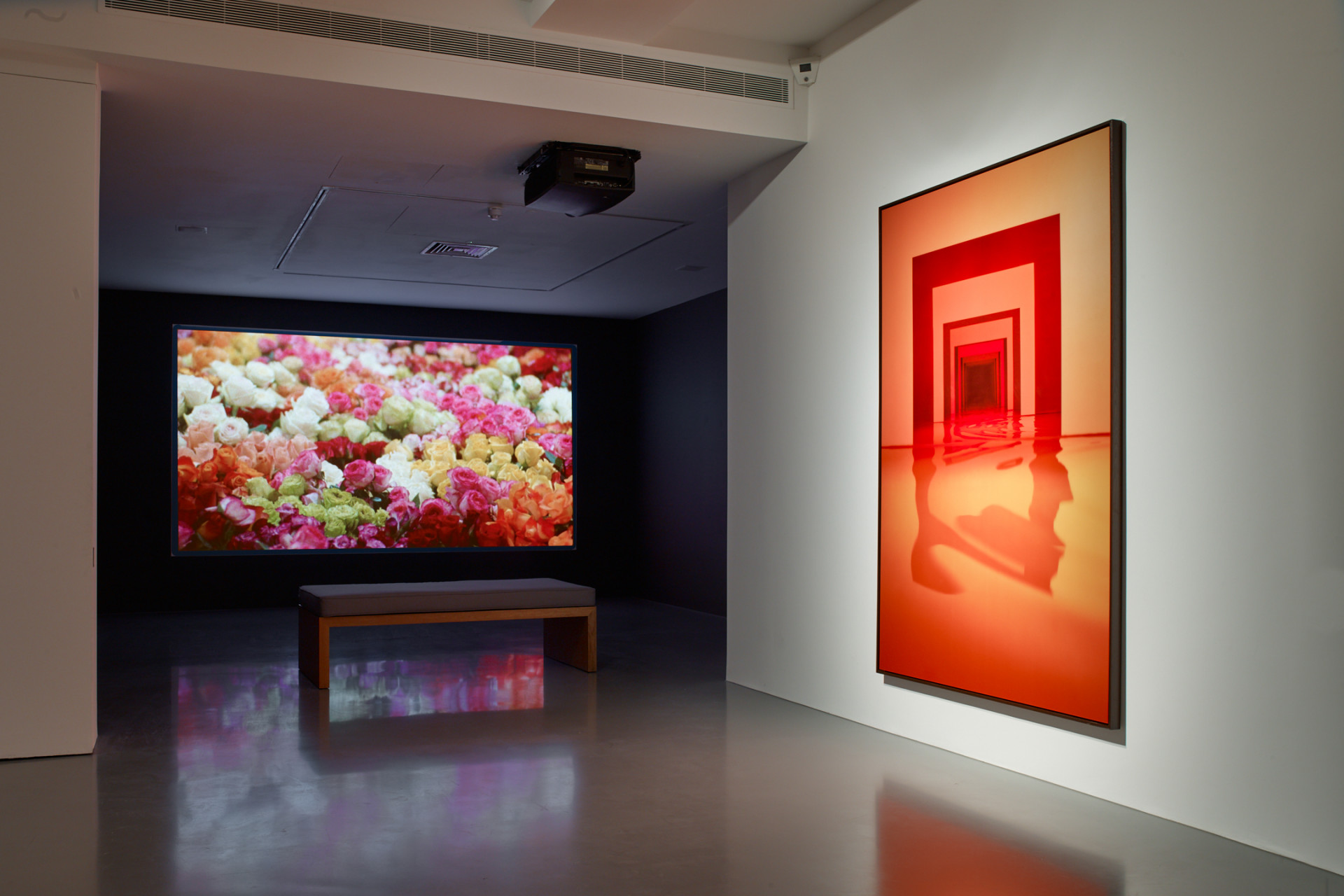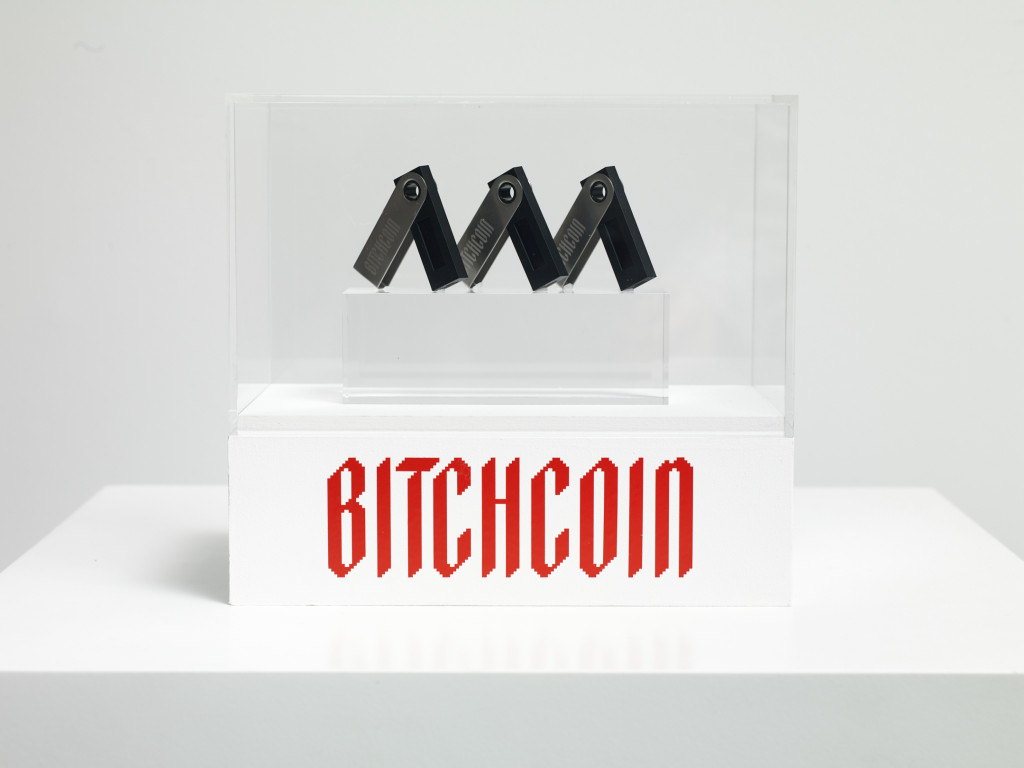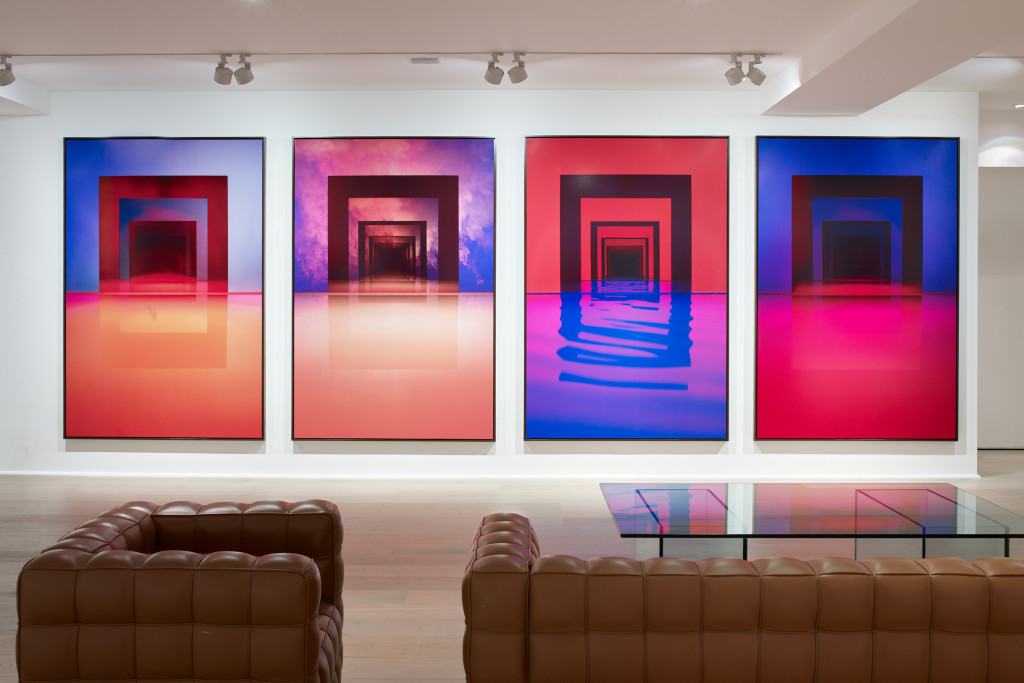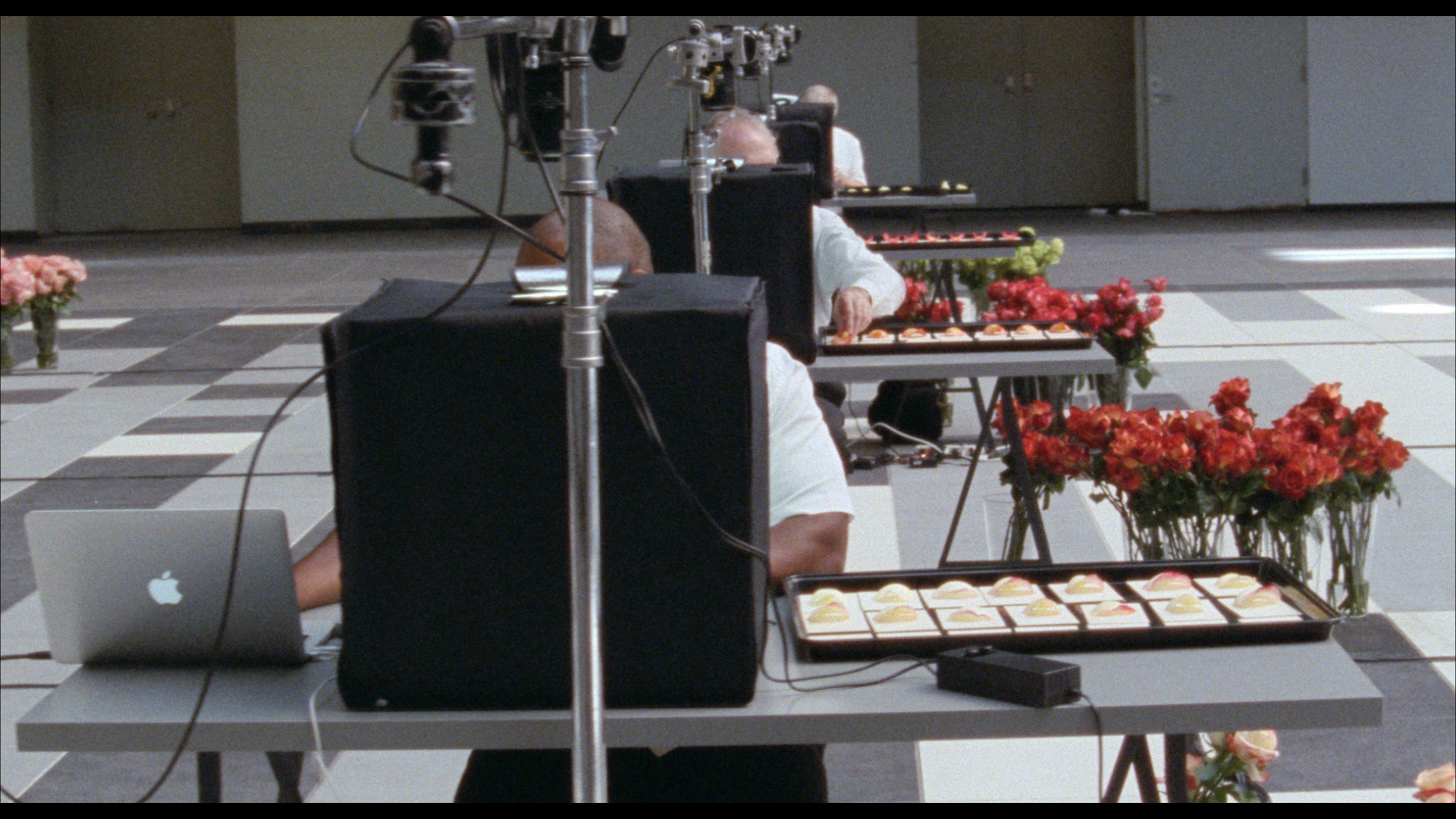Postcards from the Gameworld
Gabriel Massan’s gorgeous adventure game incorporates NFTs as player souvenirs, rather than using the blockchain to elaborate on the game’s collaborative spirit.


If her art career hadn’t worked out, Sarah Meyohas would probably have gone into finance. That was the path all three of her older brothers—Marc, Nathaniel and Olivier Meyohas—had taken. (Their father made his fortune as a corporate lawyer-turned-businessman.) Raised in Manhattan by her mother and grandmother, in 2009 the youngest Meyohas went to study business and international relations at the University of Pennsylvania’s Wharton School. She interned at Greybull Capital LLP, the private investment firm set up by Marc and Nathaniel in 2010, and at an investment fund management firm called Elliott Advisors. But in her sophomore year at Penn, she took a photography class that she really enjoyed—and “it just snowballed from there,” as she later told her school’s alumni magazine. Upon graduating from Wharton she joined the MFA program at the Yale School of Art, and decided to try making a go of it as a professional artist. There was always the less precarious plan A to fall back on. “It was like risk management with my life, my career,” she said.
In Meyohas’s system, art is literally used as an asset to back a currency, with collectors invited to become stakeholders in the future of the artist’s business.
The gamble paid off. Today Meyohas is revered in NFT circles as the creator of “proto-NFT” Bitchcoin, an art-backed crypto-token that she mined on a fork of the Bitcoin blockchain back in February 2015—and recently revived on Ethereum. Aspects of both the original and updated iterations of Bitchcoin are presented, alongside a couple of the artist’s unrelated works using AR and holograms, in a solo exhibition on view through April 29 at the brick-and-mortar Nahmad Projects in London. (Incidentally, the gallery is owned by a member of the Nahmad art-collecting dynasty, Joseph Nahmad, who is the younger brother of Nathaniel Meyohas’s wife, Michaela. It always helps to have connections.) The show is a welcome opportunity to explore a project that bridges—and offers commentary on—two very different chapters in the history of art and blockchain technology. Unsurprisingly, given Meyohas’s background, this is clearly the work of someone who gets the market: how both art and currency, whether on- or off-chain, are exchanged and yield profit.

For those who aren’t familiar with Bitchcoin, a timeline printed on a wall at the entrance to the gallery gives a brief overview. In those dark ages of pre-Ethereum-enabled tokenization, Meyohas enlisted help via the internet to create her cunningly titled altcoin. The name for the token came to her over breakfast and she just couldn’t resist it. It was also intended as a feminist gesture: an incursion of female identity into a notoriously male-dominated space. Over the course of a monthlong presentation hosted in a shipping container in Brooklyn, some hundred thousand Bitchcoins were mined on a computer placed in a room with a pink floor —more girliness!—and walls lined with reflective sheets. The installation was livestreamed through a webcam. The private and public key pairs for the tokens were printed on certificates decorated with gold embossed lips and lipstick-stain kisses. Initially sold for 100 USD, each Bitchcoin had its value pegged to a 25-square-inch section of a print from Meyohas’s (still-ongoing) photographic series “Speculations”: at any point a buyer could trade in their currency for a large-format print. The photos, shot in a studio with various backdrops and props, capture the light bouncing in an infinite loop between a two-way mirror and a standard mirror. A selection of recent additions to the series, “Liquid Speculations,” is on view in the basement of Nahmad Projects.
The idea for Bitchcoin stemmed from Meyohas’s fascination with value—in particular, what she calls the “alchemy” of how works are assigned value within the contemporary art market. “I was seeing this system for what it was,” she told Mike Novogratz, an investor and host of the market-focused podcast “Next with Novo.” “It’s very much a network, it’s very much about circulation, how is it circulating, with who is it circulating, how is it exchanged, and so I decided to make an artwork that made that system clear. I decided to enter the market, if you will, by creating a market.” Bitchcoin was designed to highlight market developments that struck Meyohas as particularly significant. It reflected not just the growing interest in blockchain technology and fractionalization but also the longer trend towards the financialization of art, and the rise of the artist as an entrepreneurial “brand.” In Meyohas’s system, art is literally used as an asset to back a currency, with collectors invited to become stakeholders in the future of the artist’s business. The challenge lies in knowing how seriously to take all this. Is Bitchcoin a joke or a genuine product pitch? As she wrote in an editorial for Artnet, it’s both: a satirical take on a patently absurd system, and an earnest attempt to participate in this system.

The original Bitchcoin enjoyed a modicum of success, particularly for an unknown recent grad like Meyohas. A total of two hundred tokens were sold, and twenty-five were exchanged for a photograph. There was a wave of media attention: articles in Wired, Hyperallergic, Artnet, Coindesk. But the blockchain network for the tokens only existed for the duration of the 2015 exhibition. In the years that followed, Meyohas continued to pursue her interest in notions of value via other mediums—one headline-grabbing work involved manipulating stock prices and recording the shifts in oil paint on canvas (Stock Performance, 2016). It wasn’t until NFTs took off in 2021 that she decided to revisit Bitchcoin. This time, Meyohas has minted exactly 3,291 Bitchcoins as ERC-1155 tokens. Instead of a share of the Speculations series, each NFT is backed by a physical work from another of the artist’s projects: a performance staged in 2017 at the former Bell Labs in New Jersey, in which Meyohas hired sixteen men to pluck a hundred thousand rose petals in order to create a massive dataset for AI-generated images. She also instructed the men to pick one petal from each rose that they deemed “most beautiful,” which was then pressed and preserved on paper. (A 30-minute film documenting the performance, Cloud of Petals, is on view in the show at Nahmad Projects.) Holders of Bitchcoins, which have been sold in bundles at auction and are currently available on OpenSea or through Nahmad Projects, may choose to burn their token in exchange for a single pressed petal.
It’s true that being a woman in crypto is still enough of a novelty these days to function as a USP.
Meyohas was partly motivated to bring Bitchcoin back, she has said, by the wish to secure her place as a pioneering woman in the history of art on the blockchain. It’s unclear whether this invocation of a kind of Sandbergian brand of “lean-in” feminism should be understood as an aspect of Meyohas’s mimetic market commentary. It’s true that being a woman in crypto is still enough of a novelty these days to function as a USP. As she did with the original project, Meyohas is playing up the femininity of the new Bitchcoin: she is currently working on a “pink paper” to lay out the concept. The coin itself, shown spinning against a stream of falling petals in a short mp4 clip, is emblazoned with an image of a woman’s gold-painted lips. But there are also new strategies that Meyohas has adopted to optimize the value of her tokens, reflecting the much-evolved market for NFTs today. Rather than drawing on an ongoing and potentially limitless series of works, as the original Bitchcoins did, the new tokens are tied to a finite supply of physical assets: a maximum of 3,291 petals. This is a definite plus for potential clients concerned about depreciation, as Meyohas discovered when talking to investors during a round of pre-sales last year. More importantly, she can now bank on her status as a self-proclaimed NFT pioneer: in an intensely speculative market, many collectors are drawn to early blockchain projects with some objectively measurable historical significance.

The timeline at Nahmad Projects takes us right up to 2022: the year that Bitchcoin reached 1,000 ETH in public trading volume and entered the collection of the Museum of Crypto Art. The floor price on OpenSea is currently 1.89 ETH. Given that in 2015 a single Bitchcoin could be purchased for 100 USD, currently worth around 0.03 ETH, that is quite the return on investment. Can you really say an artwork is satirical when it has attained such success within the system it was intended to parody? For all her intellectual and creative interest in systems of exchange and value, it appears Meyohas isn’t ready to ditch the financier mindset. In fact, she recently revealed that for the past few years alongside her artistic projects she has been quietly moonlighting as a venture capitalist, investing in tech-related businesses—earlier this year she joined the firm Spark Capital as a venture partner. “We invested in the seed round of OpenSea only because I made Bitchcoin,” she told Novogratz of her previous VC group’s decision to put money behind the NFT marketplace. “Because we realised the idea was sticky.” Who says a woman can’t have it all?
Gabrielle Schwarz is a writer and editor based in London.
